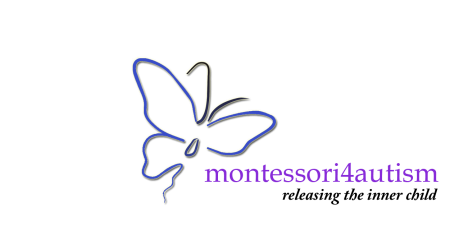Ingenuity of Montessori

Montessori vs. Traditional Schooling –
Implications for Children with Special Needs
“Often the education of children consists in pouring into their intelligence the intellectual contents of school programmes. And often these programmes have been compiled in the official department of education, and their use is imposed by law upon the teacher and the child” (Maria Montessori. “The Montessori Method”, Copyright 1964, p.27).
The Montessori educational model enables a child to realize their potential in a scientifically based, stimulating, and self-directed environment, which is superior in most cases to the loosely defined “appropriate” education and dubious “reasonable progress” mandated by public schools.
Based on the comparison below, which educational model appears to be more “appropriate” and “least restrictive” for a special needs child?
MONTESSORI MODEL |
TRADITIONAL MODEL |
| Aims at teaching to full potential while taking into account the child’s individual learning patterns and needs | “Free and appropriate public education” aims at loosely defined “reasonable progress” rather than potential |
| Emphasis on cognitive structures and social development | Emphasis on rote knowledge and social development |
| Teacher’s role is unobtrusive; child actively participates in learning | Teacher’s role is dominant, active; child is a passive participant |
| Environment and method encourage internal self-discipline | Teacher is primary enforcer of external discipline |
| Individual and group instruction adapts to each student’s learning style | Individual and group instruction conforms to the adult’s teaching style |
| Mixed-age grouping | Same-age grouping |
| Children are encouraged to teach, collaborate, and help each other | Most teaching is done by teacher and collaboration is often discouraged |
| Child chooses own work based on interests and abilities | Curriculum structured with little regard for child’s interests |
| Child formulates concepts from self-teaching materials | Child is guided to concepts by teacher |
| Child works as long as she wants on chosen project; she is allowed to complete tasks from beginning to end, and to repeat them as often as desired | Child usually allotted a specific time for work |
| Child sets own learning pace to internalize information | Instruction pace is set by group norm or teacher |
| Child spots own errors through feedback from material | Errors are corrected by teacher |
| Multi-sensory materials for physical exploration development enable each child to express his/her individual sensory preference and style of learning. | Few materials for sensory, concrete manipulation. Material is usually presented in only one manner to entire class. |
| Organized program for learning care of self and the environment | Little emphasis on self care and daily living skills |
| Child can work where she is comfortable; moves and talks at will (yet doesn’t disturb others); group work is voluntary and negotiable | Child usually expected to sit still and listen in assigned seat during group sessions |
| Curriculum accommodates diverse learning styles and capabilities | Curriculum teaches to the average child |
| Promotes development of multiple intelligences | Promotes mainly cognitive development, with strong emphasis on standardized testing |
| Each child (including prodigy and special needs) is given a chance to follow their own educational path | Despite differences, students conform to standardized curriculum and educational pace. IEPs for special needs children are often shallow and limiting. |
Adapted and expanded from The American Montessori Society
